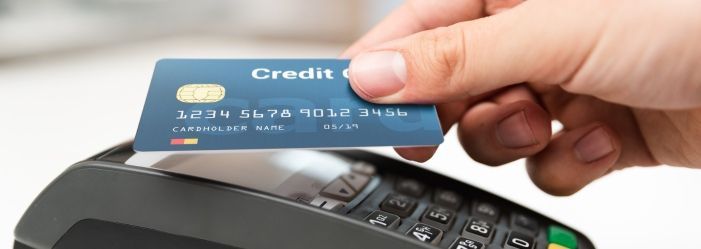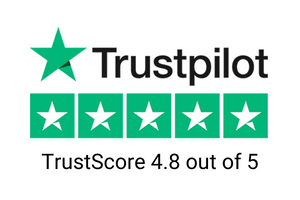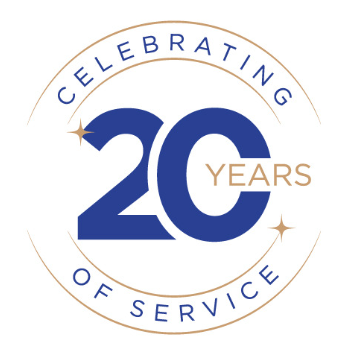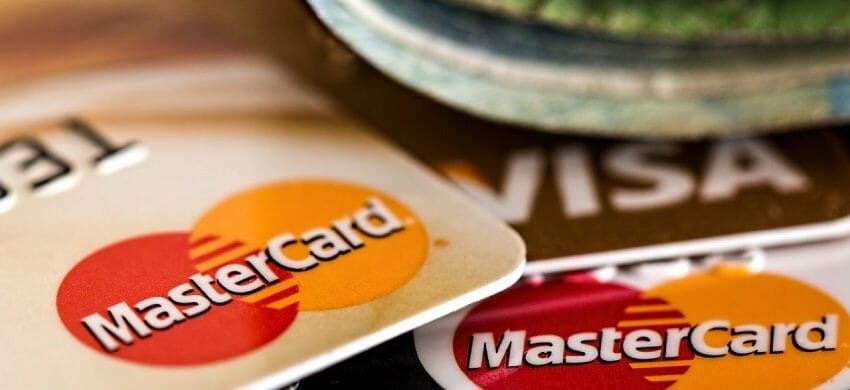Last Updated: March 25, 2024
What is Credit Card Balance Transfer?

Disclaimer: We are not qualified legal or tax professionals and are not giving advice. Always speak with a qualified professional before making any legal or financial decisions.
Moving your high-interest credit card debt to a card with a 0% introductory APR can save you a significant amount in interest charges, simplifying your payments and accelerating your debt-free journey.
The balance transfer process, while straightforward, involves several critical steps from selecting the right card to completing the transfer effectively.
Let's explore how to unlock these savings with a well-executed balance transfer.
Want to skip the article and speak directly to a debt specialist? Click here for a free consultation.
How Does a Balance Transfer Work?
You are simply changing the creditor on your debt from one credit card to another. Whatever you save on interest charges can be applied to your balance.
For instance:
- You have $10,000 in revolving debt at 26.99%
- And you want to pay it off in 15 months
- Your monthly payment will be $793
- You will pay $1607 in interest
- Your total repayment will be $11,607
Contrast that to a 0% for a 15-month balance transfer:
- You have $10,000 in resolving debt at 0%
- You must pay it off in 15 months
- Your monthly payment will be $667
- You will pay $0 in interest
- Your total repayment will be $10,000
You pay less and save $1,607. What is there to worry about?
The Downside of Balance Transfers
Offers for 0% APR are temporary. If you do not carefully read the fine print, you may run into a worse situation than you originally started with.
Before you jump all in, consider the following:
- Look for how long the 0% APR lasts. Is it 12 months, 15 months, etc.?
- What does the interest on the transferred amount become?
- Is it higher or lower than your current card?
- What is the APR on other purchases?
- Is it higher or lower than your current card?
- Is there a balance transfer fee?
- Is there a delayed transfer fee?
- Are there other fees or charges on that card?
- How much can you transfer?
Make certain you understand all of the fine print and how much you will end up paying.
Balance transfers can affect your credit score both positively and negatively. On the negative side, opening another credit card will temporarily ding your credit score. We’ll discuss the upside on your credit score in the next section.
Upsides of Balance Transfers
The upside effect on your credit score includes several factors. If you have been making late payments or skipping one payment on a debt to pay another, paying your bill on time will definitely help your credit score. As you pay off the debt, you increase your debt ratio. This debt ratio is how much debt you have compared to your total credit limit. For example, if you have $1000 in debt and $2000 credit limit, your debt ratio is 0.5. If you have $500 in debt and a $2000 credit limit, your debt ratio is 0.25. The lower it is, the better for your credit score.
Credit scores also look at utilization. If you keep your old card open (but do not use it) along with the new card, your credit utilization will increase, and your credit score will improve.
When to Consider A Balance Transfer
There are several reasons to look into doing a balance transfer.
- Debt Consolidation: Having many small loans with higher interest rates can be a definite reason to do a balance transfer. Put every penny you have been paying on the separate loans and pay down the balance!
- Pay off debt correctly: If you can pay off the balance transfer and any fees in less time, it’s probably worth it.
- Improve credit score: As stated before, your credit score will take a small hit but paying off your card and using them responsibly will improve your credit score.
- Simplify Multiple Cards: If you have debt spread across several credit cards, a balance transfer can allow you to consolidate this into one monthly payment. Just be sure to close old card accounts responsibly after transferring balances.
If you have trouble using credit cards responsibly, a balance transfer is a bad idea.
Look for a balance transfer card with:
- 0% introductory APR on balance transfers
- $0 annual fee
- 0% balance transfer fee
- Lower APR than your current card or debt
How to Make the Transfer
- Check your credit score and fix any errors you may find. You will need a score better than 670, a co-signer, or a secured credit card.
- Find the right card: spend a bit of time searching for the right balance card for you. Look for the best terms and lowest fees. Remember to check the APR and get one that is lower than your current card. Answer the questions we listed above.
- Apply for the balance transfer credit card: fill out the application with all pertinent data
- At this point, you wait for the approval. Don’t forget to pay your credit card bills on time!
- Once you are approved, focus all your energy on paying down the balance transfer.
- While you are at it, set up a budget and review your spending so you don’t get into the same position again.
Balance Transfer Alternatives
If you find that balance transfers are not the right option for your financial situation, consider alternatives like debt consolidation loans, nonprofit debt management plans, or professional debt settlement.
Debt consolidation loans allow you to combine multiple debts into one new loan with a lower interest rate. This can make monthly payments and payoff timelines easier to manage. Banks, credit unions, and online lenders offer debt consolidation loans. To qualify, you’ll generally need good to excellent credit.
Nonprofit credit counseling agencies like Money Management International offer debt management plans (DMPs) that can lower interest rates and fees and provide structure around paying off debt. Expect to repay debt in full over 3-5 years. The agency acts as an intermediary between you and your creditors.
With debt settlement, a company like Pacific Debt negotiates directly with your creditors to reduce what you owe. This typically requires stopping payments and letting accounts become delinquent to prompt creditors to negotiate settlements for less than the full amount owed. Debt settlement leads to negative items on your credit report.
Finding the Best Balance Transfer Card
Since the market for balance transfer credit cards changes frequently, when finding the best balance transfer card for your situation.
Here is what to look for:
- Length of 0% intro APR period for balance transfers - aim for at least 12 months
- Presence of an intro 0% APR period for new purchases too - ideal if available
- Balance transfer fees and other charges - 3-5% is typical
- Permanent APR after the intro period ends - compare to your current rates
- Your likelihood of paying off the balance in full during 0% intro period
Resources like NerdWallet and CreditCards.com offer tables comparing top current balance transfer offers. For example, some top picks right now are the Citi Diamond Preferred Card (21-month 0% APR period) and the Wells Fargo Reflect Card (18-month 0% APR period).
FAQs
Conclusion
Balance transfers allow you to move existing credit card debt to a new card with a temporary 0% introductory APR, potentially saving hundreds in interest charges. However, these promotions last a limited time. You must continue making on-time payments, and watch out for fees like 3-5% on the amount transferred.
Thoroughly review the terms and your budget first to ensure you can pay off the entire balance before rates rise again. If in doubt, explore alternatives like debt consolidation loans or non-profit debt management plans.
Use balance transfers strategically as part of your overall debt reduction strategy, not as a band-aid fix. Approach new credit applications carefully and judiciously - opening too many new accounts can negatively impact your credit.
Pacific Debt, Inc.
If you have overused your credit cards and are deep in debt, you may need more help. If you’d like more information on debt settlement or have more than $10,000 in credit card debt that you can’t repay, contact Pacific Debt, Inc. We may be able to help you become debt free in 2 to 4 years.
*Disclaimer: Pacific Debt Relief explicitly states that it is not a credit repair organization, and its program does not aim to improve individuals' credit scores. The information provided here is intended solely for educational purposes, aiding consumers in making informed decisions regarding credit and debt matters. The content does not constitute legal or financial advice. Pacific Debt Relief strongly advises individuals to seek the counsel of qualified professionals before undertaking any legal or financial actions.
✔ Accredited by Better Business Bureau with BBB A+ rating (4.93 rating and 1678 reviews)
✔ US News and World Reports and Bankrate ranked Pacific Debt Relief as one of “The Best Debt Relief Companies of 2024”
✔ 6.9 star rating by BestCompany.com (over 2379 client reviews)
✔ 4.8 star rating by TrustPilot based (over 1613 verified consumer reviews)
✔ ConsumerAffairs.com Accredited (over 544 verified reviews with an average rating of 5 stars)
✔ A Top 10 Rated Compan by TopTenReviews.com , ConsumersAdvocate.com and Top10debtconsolidation.com
✔ 4.6 star rating by Google (229 client reviews)
✔ 100% rating by SuperMoney (9 client reviews)
Reduce Your Credit Card Debt By Up to Half

BBB Reviews | 4.9/5.0 Rating









 Do Not Sell My Personal Information
Do Not Sell My Personal Information